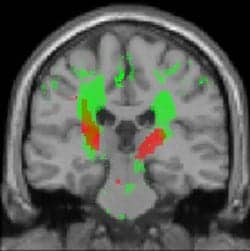
The results indicated that the diameter of the spinal cord had rapidly decreased and was already 7% smaller after 12 months. The researchers add that a lesser volume decline was also observed in the sensorimotor cortex. The results suggest that the extent of the degenerative changes was linked to the clinical outcome.
Patrick Freund, PhD, who was the investigator responsible for the study at the Paraplegic Center Balgrist, rearticulates the results, noting “Patients with a greater tissue loss above the injury site recovered less effectively than those with less changes.”
The findings underscore the importance of gaining knowledge about the mechanisms of repair and recovery within the first year. Freund adds that new neuroimaging protocols have helped pave the way to demonstrating the impact of therapeutic treatments on the central nervous system and of rehabilitative measures more quickly.
Alan Thompson, MD, FRCP, FRCPI, FAAN, UCL dean of Brain Sciences, senior study author, emphasizes that the study also “provides exciting new insights into the complications of spinal cord trauma and gives us the possibility of identifying both imaging biomarkers and therapeutic targets.”
Photo Caption: This shows MRI protocol. Red: This shows dynamic tissue loss in the corticospinal tract and sensorimotor cortex after twelve months of spinal cord injury. Green: These are spots with reduced myelin layer.
[Photo Credit: UZH]
[Source: University of Zurich]





